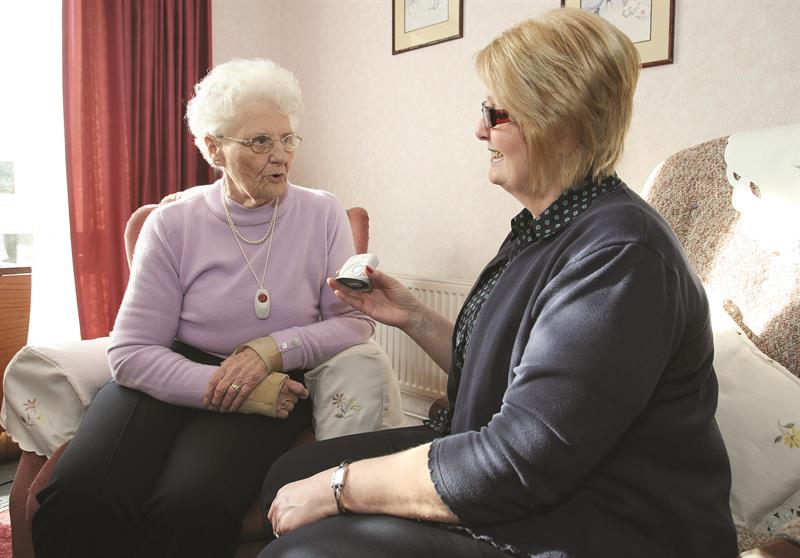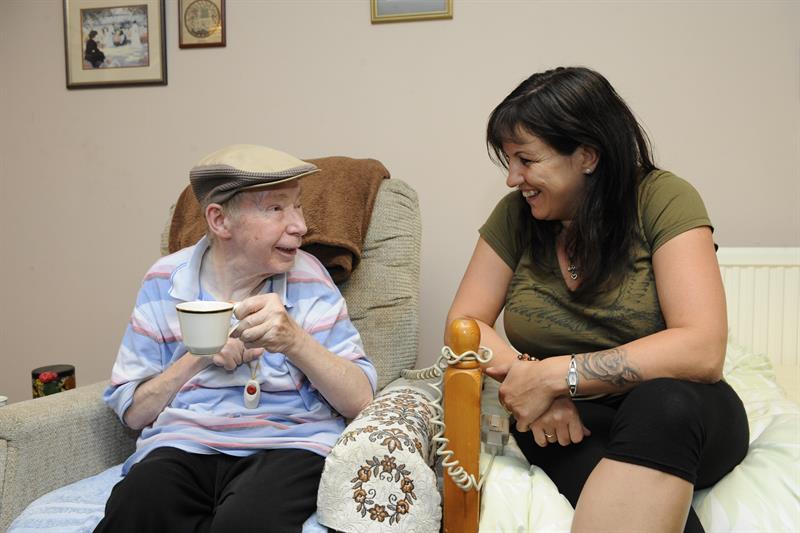Fast forward 90 years and, while there are pockets where telehealth is working successfully, some will say we are not a lot closer to realising Gernback’s dream.
In the UK, there have been several attempts to ‘join up the dots’. One initiative – called 3 Million Lives (3ML), launched by the NHS in 2011 in conjunction with industry, social care and professional partners – was to use telehealth to improve the lives of those 3m people over a five year period.
3ML came out of an earlier project called the Whole Systems Demonstrator (WSD), designed to assess the benefits and impact of telehealth and telecare. The project involved 6000 patients from 230 GP surgeries in Newham, Kent and Cornwall. Its conclusion was the ‘correct’ use of telehealth could cut A&E visits by 15%, emergency admissions by 20% and bed days by 14%.
The WSD report claimed ‘at least 3m people with long term conditions and/or social care needs could benefit from using telehealth and telecare’.
While 3ML started with great ambitions, it failed to deliver and has been reformatted in the form of TECS – Technology Enabled Care Services.
TSA – formerly known as the Telecare Services Association – brings together organisations across local government, health and the private sector. Alyson Scurfield, TSA chief executive, said: “TECS is wide ranging. It includes such areas as telehealth, telecare and telemedicine, where patients have video connected consultations.”
Technology has made a strong contribution to telemedicine. The latest HD cameras can capture images which are said to be as good as a face to face consultation. The approach makes better use of consultants around the country, with dermatology being one of the early adopters.
In some respects, telehealth can be seen as preventive medicine. “The NHS is under pressure,” Scurfield said, “and hospitals are overspending, so it could be preventive, but it’s not as well supported as you might imagine.”
The NHS currently spends more than £100billion a year, with 70% of this spent on long term conditions such as diabetes, heart disease and dementia. If these patients could be dealt with outside hospital or their conditions managed, a good case can be made for more effective telehealth and telecare services.
According to some in the general telehealth/telecare sector, 3ML fell by the wayside because of that lack of ‘joining up’. ‘It needed data to be joined together’ one observer commented. ‘If you don’t have people’s details, it becomes difficult to monitor them. If their details are in different places, they have to start with their story again every time’.
Now, the ambitions outlined in the 3ML project have been wrapped up in the National Information Board. According to that organisation’s website, its role is to put data and technology to work safely for patients, service users, citizens and the professionals who serve them.
One of the problems facing those looking to introduce systems that support medical intervention is the need for regulatory approval. It takes an average of 17 years for a technology to be adopted because of the clinical tests and trials that most developments have to get through in order to prove they’re safe and, importantly, cost effective.
One way in which telehealth can be implemented is via smartphone apps – and there are apps available to measure your heart rate, blood pressure, temperature and so on. But what appears to be an elegant way of linking patients with healthcare professionals is developing into a regulatory and technical minefield.
Scurfield noted that something like 165,000 smartphone apps have been launched. “But there are concerns that many have not been evaluated.” One of the issues focuses on quality; can the apps record things accurately? Apparently, in the US, only around 100 smartphone apps have been approved by the FDA and many have been withdrawn. “For example,” Scurfield continued, “some apps which suggest a smartphone can identify whether a mole is a melanoma haven’t been checked medically.”
However, the FDA only regulates those apps used as an accessory for a regulated medical device or which transform a mobile platform into a regulated medical device. Examples include Kardia, which can capture a medical grade EKG in 30s, and the Mobius Ultrasound system.
Other kinds of technology are available on the High Street, including blood pressure monitors and activity monitors. “If you buy a blood pressure monitor from a High Street chemist,” Scurfield pointed out, “it will have been tested under the Medical Directive. Activity monitors will not have been and indications of step count, for example, may not be that accurate.”
 In the UK, the NHS hasn’t been immune from these issues. It had an apps library at one point, but this was closed when flaws were found. Having been offline for a few months, the service is expected to come back later this year.
In the UK, the NHS hasn’t been immune from these issues. It had an apps library at one point, but this was closed when flaws were found. Having been offline for a few months, the service is expected to come back later this year.
“There’s a role for apps,” Scurfield noted, “if they help to change behaviours. For example, a connected scale could motive the user and these types of app don’t need to be super accurate.”
More squarely in the TSA’s focus is the issue of assisted living, or telecare. In fact, it actively promotes independence and well being through the use of technology. “If you can use technology to keep people in their homes, they won’t end up in care as quickly,” Scurfield pointed out. “But cost is a pressure here; not only on individuals, but also on the local authorities who have to fund care.”
Telecare is another area with a long history, with the earliest alarm systems launched in the 1950s. Today, these systems include a range of personal and home based sensors.
One of the more obvious assisted living applications is fall detection and technology to support this has been available for more than a decade. “But these systems only detect a fall,” Scurfield highlighted. “They don’t prevent one.” The systems have also proved troublesome because of false alarms and users dropping them.
And it is here that the latest technology could play a central role. If systems can take advantage of predictive analytics, then fall detection may move towards prevention. This will not only require more tracking technology, but also taking advantage of ‘Big Data’.
“These systems could access a range of data,” Scurfield said. “For example, the person may be on medication that makes them a bit wobbly. And there are measures – such as frailty monitoring and gait detection – that can be accessed. If they can’t walk a certain distance in given time or if they start walking differently, it could indicate a potential fall.”
But it isn’t just the elderly who might benefit from telecare. “It benefits all ages,” Scurfield asserted. “While the elderly benefit, it’s also applicable to those with dementia, learning disabilities, the physically disabled, those recently discharged from hospital and those who simply live alone. TECS is intended to move care closer to the home.”
Late to the game?
Although some might accuse the NHS of being late to the game, it is making efforts to improve the way it uses technology to deliver care.
Simon Stevens, chief executive of NHS England, told the World Economic Forum at the beginning of 2016: “Over the next decade, major health gains won’t just come from a few ‘miracle cures’, but also from combining diverse breakthroughs in fields such as biosensors, medtech and drug discovery, mobile communications, and AI computing.
“Our new NHS Test Beds programme aims to cut through the hype and test the practical benefits for patients when we bring together some of these most promising technologies in receptive environments inside the world’s largest public, integrated health service.”
The programme, which will bring together local health bodies, hospital trusts, primary and community care providers and innovators from home and abroad, aims to harness technology to address complex issues facing patients and the NHS.
Each Test Bed will use a different combination of innovations to address locally identified clinical challenges, such as supporting people with diabetes and other long term conditions to manage their care better; supporting older people to stay independent at home; better support for people at risk of mental health crisis, and; improving how to predict care needs for both individuals and local populations.
There will be five health and care Test Beds and two IoT Test Beds, with trials in the West of England, Surrey, Sheffield and Birmingham (see box).
Alongside these projects, Google’s DeepMind will be working with the Royal Free London NHS Trust, using anonymised patient data to develop an app that will produce medical alerts and for clinicians treating patients with acute kidney injuries. Crucially, it will identify those at risk of kidney failure.
Where now?
Despite recent advances in technology, there still remain areas where solutions need to be developed. For example, while there are some care robots in Japan, they have yet to appear in the UK and organisations such as TSA are looking at these areas.
George Freeman MP, Parliamentary Under Secretary of State for Life Sciences, told the 2015 International Technology Enabled Care conference: “Digital technology has transformed other walks of life from banking to travel agencies and education; they can – and are beginning to– do the same in health.
“This agenda isn’t just about digitalising the system for the benefit of the providers; it’s about empowering 21st Century healthcare citizens to have the responsibilities, the choice and the information in their hands that they need to take those steps to be active and to help take more responsibility for their health outcomes,” he concluded.
NHS England Test Beds
The two IoT Test Beds are:
|














